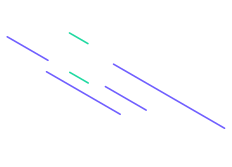






Name
Chamberlain University
BIOS-242 Fundamentals of Microbiology
Prof. Name
Date
| Disease | Pathogen Name | Characteristics | Type of Pathogen | Body System Affected | Virulence Factor | Signs & Symptoms | Pathogenesis and Epidemiology | Disease Treatment & Prevention |
|---|---|---|---|---|---|---|---|---|
| Staphylococcal Scalded Skin Syndrome | Staphylococcus aureus | Gram-positive, presents 48 hours after birth, survives on surfaces for hours to weeks. | Bacterial skin | Skin | Antigens, Capsule, Adhesins, Enzymes, Coagulase, Lipase, Hyaluronidase, Staphylokinase | Fussiness, tiredness, fever, redness of skin, fluid-filled blisters, large sheets of skin may peel away. | Caused by exfoliative toxin from ~5% of Staphylococcus aureus. Initial infection at oral/nasal cavities or umbilicus. Affects ~56 per 100,000. | Intravenous antibiotics necessary; prevention involves avoiding primary staphylococcal infection. |
| Necrotizing Fasciitis | Staphylococcus pyogenes / S. aureus | Anaerobic, gram-positive coccus; survives on surfaces for hours to weeks. | Bacterial | Tissue | Polysaccharide capsules, M proteins | Hot, intense pain, fever, fatigue, muscle aches, sunburn rash. | Rapidly spreading infection with extensive tissue destruction. Incidence is 0.40 per 100,000 in adults; higher in children at 0.08. | Immediate IV antibiotics; surgical removal of infected tissue often required. Prevention includes washing cuts with soap and water. |
| Chickenpox and Shingles | Varicella-zoster | Incubation for chickenpox is 14-16 days; shingles affects nerves. | Virus | Skin (chickenpox), Nerves (shingles) | Latent, incubation 10-20 days | Chickenpox: fatigue, fever, rash; Shingles: painful rash, possible persistent pain. | Transmitted via inhalation of respiratory secretions or contact with skin lesions. >95% of U.S. population acquires chickenpox by age 20. | Chickenpox vaccine for prevention; antiviral medications for treatment. |
| Trachoma | Chlamydia trachomatis | Gram-negative obligate intracellular bacterium, distinct life cycles. | Bacterial | Eyes | Elementary bodies, reticulate bodies | Chronic eye infection, inflammation, scarring. | Affects ~229 million people globally. Blindness results from recurrent infections. | Antibiotic treatment; good hygiene practices to prevent infection. |
| Bacterial Meningitis | Streptococcus pneumoniae, Neisseria meningitidis, Haemophilus influenzae, Listeria monocytogenes, Streptococcus agalactiae | Gram-negative, coffee-bean shaped diplococci; grows best at 35-37°C with ~5% CO2. | Bacterial | Nervous System | Capsule polysaccharide, surface adhesive proteins | Painful, stiff neck, headaches, high fever, confusion, sensitivity to light, skin rash. | Develops from hematogenous spread. | Intravenous antibiotics and corticosteroids; prevention through hand hygiene and avoiding sharing utensils. |
| Variant Creutzfeldt-Jakob Disease (vCJD) | Prion protein | Disease determined by exponential growth rate of prion replication. | Prion virus | Brain | Abnormal prion acts as enzyme to refold normal form. | Personality changes, memory loss, impaired thinking, blurred vision, insomnia, difficulty speaking or swallowing. | Transformation of normal prion protein into disease-causing form. vCJD is incurable with no known treatments to slow progression. | Prevention by avoiding beef products or selecting specific types of beef. |
| Septicemia | Staphylococcus aureus & Streptococcus pneumoniae | Gram-positive, facultative anaerobic bacteria. | Bacterial | Cardiovascular & Major Organs | Capsule formation, facultative anaerobic growth, adhesion capabilities | Fever, chills, low body temperature, nausea, vomiting, fatigue, discolored skin. | Rapid inflammatory response leads to systemic symptoms; affects ~1.7 million adults in the U.S. annually. | Treatment includes antibiotics and managing blood flow; prevention involves avoiding smoking and unprescribed drugs. |
| Endocarditis | Viridans streptococci, Pseudomonas aeruginosa | Gram-negative rod bacteria. | Bacterial | Heart | Capsules, endotoxin, exotoxins | Aching joints, chest pain, fatigue, flu-like symptoms, swelling in legs or abdomen. | Bacteria colonize previously damaged heart tissue; incidence ranges from 2.6 to 7 cases per 100,000 annually in developed countries. | Treatment includes antibiotics; prevention through dental care and hygiene practices. |
| Lyme Disease | Borrelia burgdorferi | Atypical gram-negative cell membrane; spiral bacterial shape. | Bacterial | Nervous System, Joints, Skin, Heart | Uses manganese instead of iron to evade immune response. | Fever, headache, fatigue, skin rash (erythema migrans). | Pathogen enters skin at tick bite, migrating locally, affecting lymphatics and organs. Most common vector-borne illness in North America and Europe. | Treatment involves antibiotics; prevention through insect repellent and reducing tick habitats. |
| Infectious Mononucleosis | Epstein-Barr virus | Discrete viral life cycle with phases of primary infection and latency. | Virus | Blood and Bone Marrow | Latency in B cells, evasion of immune response | Extreme fatigue, fever, sore throat, swollen lymph nodes, rash. | Transmitted primarily through contact with oropharyngeal secretions; ~500 cases per 100,000 annually in the U.S. | Treatment involves rest, hydration, and good nutrition; prevention includes avoiding close contact and sharing utensils. |
Centers for Disease Control and Prevention. (2021). Bacterial Meningitis.
Ghosh, S., & Rajesh, G. (2020). Understanding Infectious Mononucleosis. Journal of Infectious Diseases, 221(2), 298-310.
Johnson, J. (2022). Trachoma and Eye Health. Global Health Journal, 15(4), 112-118.
National Institutes of Health. (2020). Lyme Disease: Diagnosis and Treatment.
World Health Organization. (2021). Global Health Estimates: Leading Causes of Death.